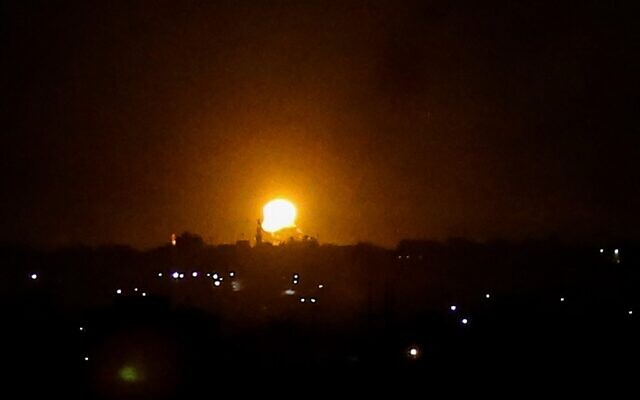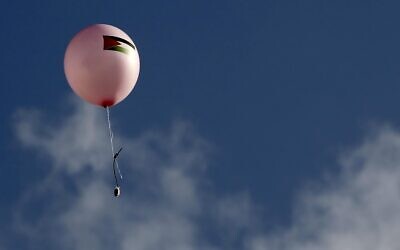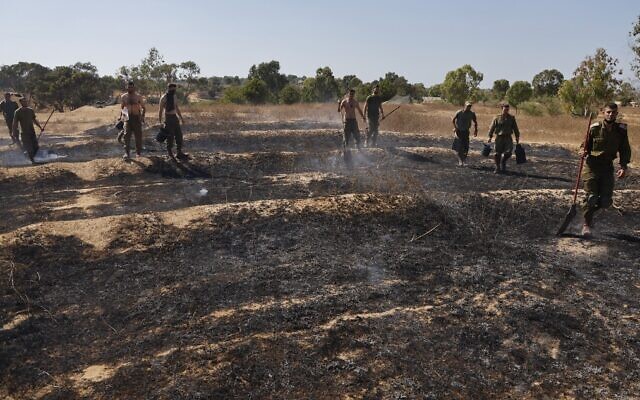Escalation of violence comes after day where at least 42 fires were sparked by balloon-borne incendiary devices lofted from the Strip

The Israel Defense Forces struck Hamas targets in the Gaza Strip on Thursday night for the tenth day in a row amid ongoing arson balloon attacks and several rocket launches on southern Israel, as the tense border region appeared to heat up.
The strikes were preceded by a failed rocket attack and drew three more launches, which were intercepted by the Iron Dome air-defense system, in a marked escalation of already high tensions. There were no casualties or damage.
The IDF said fighter jets and other aircraft struck “a concrete plant used for building underground infrastructure and tunnels for the Hamas terror group.”
It said the strike was in response to balloons carrying incendiary devices and explosive launched into Israel throughout the day.
Palestinian media reported that the Israeli strikes targeted a Hamas military wing facility in Khan Yunis in southern Gaza. Palestinian sources reported light damage but no casualties.
The reported strikes came shortly after the army confirmed that several rockets had been fired fired from the Gaza Strip toward Israel, but apparently landed inside the coastal enclave.

The earlier rockets did not trigger warning sirens in any Israeli communities near the Hamas-run coastal enclave and there were no reports of injuries.
The three rockets that followed the Israeli strikes did trigger alarms in communities surrounding Gaza, but they were shot down by the military’s Iron Dome system, the IDF said.
The launches capped a day where at least 42 fires were sparked by balloon-borne incendiary devices lofted from Gaza, according to the Fire and Rescue Service. A statement from the fire service said most of the blazes were small and didn’t pose any danger to people or property.
Over the past few weeks, terrorists in the enclave have again begun launching balloon-borne incendiary and explosive devices into southern Israel, sparking dozens of fires that caused environmental and property damage in the region.
There have also been several rocket attacks on southern Israeli towns, which so far have caused no casualties and little damage.
Those attacks have drawn daily retaliatory Israeli strikes against Hamas installations.

On Tuesday, Gaza officials announced that the Strip’s sole power station had run out of fuel and would stop operating. Israel cut off fuel transfers via the Kerem Shalom crossing a week ago as a punitive measure following the rocket and balloon attacks.
Also on Tuesday, Prime Minister Benjamin Netanyahu said Israel would respond to airborne arson attacks in the same manner it does rocket attacks, and warned that there could be another major flareup in Gaza.
“I regret that we are also preparing, to the extent necessary, for the possibility of a round or rounds [of fighting]. I hope that we will not get there,” he told local leaders of Gaza-area communities.
As reported by The Times of Israel
